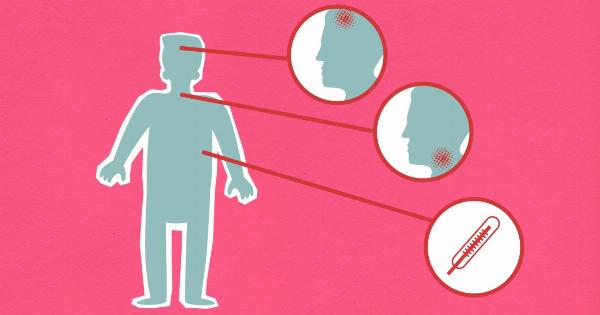Thromboembolism is a serious condition that occurs when blood clots block the flow of blood to vital organs, such as the heart. If left untreated, it can lead to heart attacks, strokes, and even death.
The good news is that thromboembolism is preventable, and there are many steps you can take to protect your heart.
Understand Your Risk Factors
The first step in preventing thromboembolism is understanding your risk factors. Some factors you cannot control, such as age, gender, and hereditary conditions. Other factors, however, are within your control. These include:.
- Smoking or using tobacco products
- Lack of exercise
- Poor diet and nutrition
- Obesity or being overweight
- High blood pressure
- Diabetes
- High cholesterol or triglyceride levels
- Pregnancy and hormonal birth control
If you have any of these risk factors, it is important to take steps to reduce them and protect your heart.
Maintain a Healthy Lifestyle
A healthy lifestyle is essential for preventing thromboembolism. This includes:.
- Quitting smoking or using tobacco products
- Getting regular exercise, such as walking or jogging
- Eating a healthy diet rich in fruits, vegetables, and whole grains
- Maintaining a healthy weight
It is also important to limit your intake of alcohol and caffeine, both of which can increase your risk of thromboembolism. If you have a sedentary job, take breaks every hour to move around and get your blood flowing.
Manage Your Medical Conditions
If you have medical conditions that increase your risk of thromboembolism, such as high blood pressure, diabetes, or high cholesterol, it is important to manage them effectively. This may include:.
- Taking medications as prescribed by your doctor
- Eating a healthy diet and getting regular exercise
- Monitoring your blood pressure and blood sugar levels
- Getting regular check-ups and blood tests
If you have a hereditary condition that increases your risk of thromboembolism, such as Factor V Leiden or Protein C or S deficiency, talk to your doctor about treatment options.
Prevent Blood Clots
Preventing blood clots is essential for protecting your heart and preventing thromboembolism. Here are some ways to prevent blood clots:.
- Wear compression stockings if you are at risk of deep vein thrombosis (DVT)
- Take breaks and stretch your legs during long periods of sitting or traveling
- Avoid crossing your legs for long periods of time
- Stay well-hydrated and avoid dehydration
- Avoid tight-fitting clothing or socks that may constrict blood flow
Recognize the Symptoms of Thromboembolism
If you experience any of the following symptoms, seek medical attention immediately:.
- Chest pain or pressure
- Shortness of breath or difficulty breathing
- Lightheadedness or dizziness
- Fainting
- Swelling, redness, or warmth in one or both legs
- Coughing up blood
These symptoms may indicate a heart attack, stroke, or pulmonary embolism, which require immediate medical treatment.
Conclusion
Thromboembolism is a serious condition that can have life-threatening consequences. However, it is preventable with healthy lifestyle choices, effective management of medical conditions, and preventive measures to avoid blood clots.
By taking these steps, you can protect your heart and reduce your risk of thromboembolism.






























